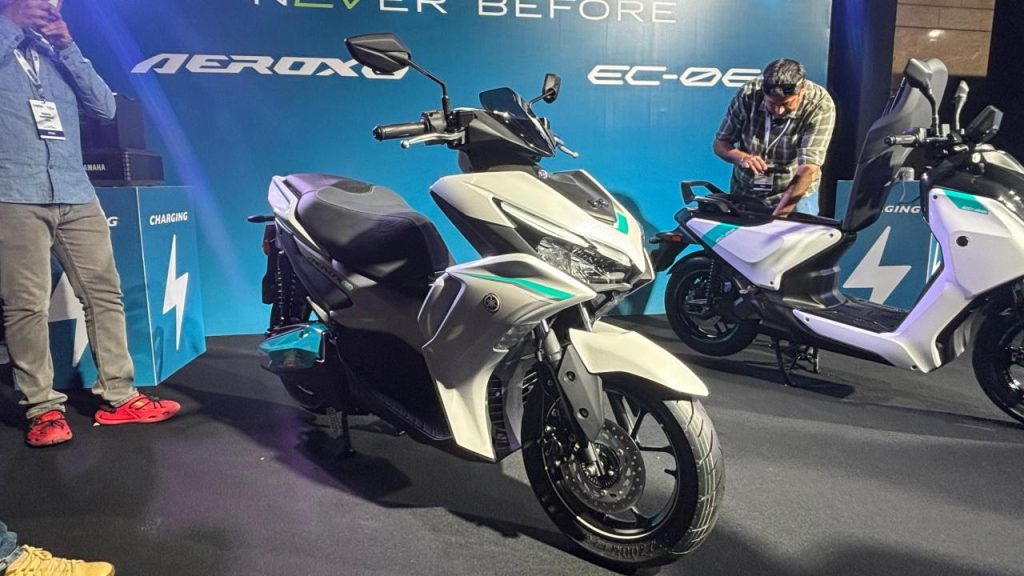Yamaha has taken a bold step into Electric Maxi-Scooter territory with the Aerox-E — an electrified version of its sporty Aerox platform that blends performance-focused styling with an electric powertrain aimed at longer urban ranges and spirited riding.
Unveiled alongside a couple of other new Yamaha Models, the Aerox-E is pitched as a premium, tech-rich electric scooter with commuter practicality and a sporty character.
Powertrain & Range
At the heart of the Aerox-E are two removable 1.5 kWh battery packs (total usable capacity ≈ 3 kWh) that feed a motor rated around 9.4–9.5 kW peak and producing roughly 48 Nm of torque.
That configuration gives the scooter a certified range of about 106 km on a single charge — an impressive figure for a sport-oriented e-scooter and one that Yamaha uses to position the Aerox-E for both daily commuting and longer urban runs. The dual-battery, removable design also opens up flexible charging options and easier battery swaps or at-home charging.
Performance & Riding Experience
Yamaha hasn’t abandoned the Aerox’s sporty DNA. The electric drivetrain promises brisk acceleration thanks to instant electric torque, and Yamaha includes multiple riding modes — typically Eco, Standard, and Power — plus a temporary “Boost” mode for sharper starts and overtakes.
The Aerox-E also adds practical aids like a reverse mode to help manoeuvre in tight parking spots. Reported kerb weight is around 139 kg, which is modest for an electric maxi-scooter and helps keep handling lively.
Tech & Features
The Aerox-E is equipped with modern conveniences expected at this price/positioning: a large colour TFT instrument cluster with Bluetooth connectivity and turn-by-turn navigation, a smart-key system, disc brakes (both ends) with single-channel ABS, and traction control.
Yamaha’s styling retains the Aerox’s aggressive, athletic lines — twin LED Class-D headlights, an X-centre motif in bodywork, and a 3D LED taillight — so buyers get sport scooter looks with electric tech inside.
Practicality & Ownership Considerations
Removable batteries mean owners can charge at home without installing dedicated chargers, and swapping batteries (where supported) can reduce downtime for multi-shift riders. Yamaha has hinted at multiple charging options, but full charging time figures and fast-charge compatibility are yet to be detailed for various markets.
The 106 km certified range will vary in real use depending on riding mode, load, environment, and speed — as with any EV — but it’s a strong baseline for everyday commuters who typically cover short to medium distances.
Where and When
Yamaha unveiled the Aerox-E as part of its India model rollout and says the scooter is slated for launch in early 2026 in that market, with initial pricing indications suggesting a premium positioning (reports mention a starting price north of ₹2.2 lakh ex-showroom, though official pricing will be confirmed closer to launch). Yamaha is also presenting other EV models alongside the Aerox-E, signalling a broader electrification push.
Summary
The Aerox-E is notable because it packages Yamaha’s sporty maxi-scooter character into an electric platform while delivering a genuinely useful range figure and modern connectivity/features.
If Yamaha nails charging convenience, pricing, and dealer support, the Aerox-E could appeal to riders who want sport scooter style without fossil-fuel compromises — provided they’re willing to accept the higher upfront cost typical of premium e-scooters today.

